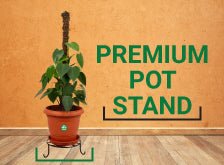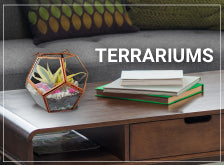How to Grow
Why Plant Leaves Turn Yellow and 6 tips to avoid them
Who does not like lush green healthy plants? Everyone of us loves to keep such healthy plants in our home. But there is one common problem every one of us hate is the yellowing of plants. When you see the leaves of your favorite plant turning yellow, you feel sad and disappointed. But do not lose motivation for growing more plants. Here we will let you know important reasons for the yellowing of your plants and how to save your plants from yellowing.

Reasons for yellowing of plants:
1. Overwatering
2. Underwatering
3. Nutrient deficiency
4. Attack of some pest and diseases
5. Less sunlight
All the reasons listed above are the main reasons for the yellowing of plants. But I will discuss here the yellowing of plants due to less sunlight. We have experimented with two turtle vine plants to show how sunlight has a major role in the growth and development of plants. We kept plant 1 in sunlight and plant 2 in dark for more than a week to check the effect of light on plant's growth.
Result of the experiment:
We have observed that the plant kept under sunlight was healthy, with lush green leaves. But the plant which was in dark was weak and shown pale yellow color of leaves. So it demonstrates that plants require sunlight to stay green and healthy.


Reason for the yellow color of leaves:
Plants are green in color due to the production of chlorophyll content. In common words, chlorophyll refers to green color pigment present in the plants. That means the green color of plants is mainly due to the presence of chlorophyll pigment.
Plants need enough amount of sunlight to produce chlorophyll. Hence when plants are unable to produce chlorophyll content their leaves turn into pale green color. So this is the result we got when we kept plant 2 in dark for more than a week. Therefore sunlight takes a major role in maintaining the green color of plants and it is the primary reason for the yellowing of your plants. The factors that effect the growth of plants under the light are as follows,
List of light factors that affect the growth of plants:
1. Intensity of light
2. Propagation direction of light
3. Spectrum of light
1. The intensity of light:
In common words intensity of the light refers to the brightness of the light or intensity of light refers to amount of energy received per unit area, per unit time.

If the place where you live receives intense light or brighter light, then it is very good for the growth of plants. Naturally, every plant loves intense or brighter light except few plants which like to grow in low or indirect light conditions. Examples of such plants are anthurium, peace lily, Boston fern, etc.
If sun-loving plants do not receive bright light, they will not bear a good number of flowers and fruits. Therefore the intensity of light is very important for a plant to go through different stages of growth.

Here you can observe the difference between seedlings grown in light and dark. The small seedlings turned pale yellowish color under dark.
And seedlings grown under the light are normally green. When plants produce a good amount of chlorophyll, leaves will be in green color. So for the production of chlorophyll, sunlight is very important. Therefore plants under dark become pale green or yellow color.
You might be having a question if the leaves are yellow in color what will be the loss? The answer is, it will not perform the photosynthesis process. If there is no photosynthesis, there is no production of fruits and flowers. That's why sunlight is important for any plant.
2. Direction of propagation of light:
Propagation of light refers to the direction of the fall of light i.e. in which direction light travels and in which direction we place our plants. The direction of placing the pot becomes very important, to receive the maximum amount of light. Here is a simple rule to utilize the maximum amount of light, and help your plant to grow well.
Do not place the plants in an east-west direction. Because they tend to shade each other. When one plant's shade falls on another plant, it reduces the food production in that plant. To overcome this situation you need to place the pots or plants in the North-South direction.


In the direction of North-South, plants will not shade each other and plants will absorb the maximum amount of light and perform higher photosynthesis. One more advantage of placing plants in the north-south direction is the equal distribution of light. This means all the plants get an equal amount of sunlight.
3. The spectrum of light:
Spectrum refers to different wavelengths of energy produced by sunlight. In this spectrum, plants use only 400-700 nm of energy for their photosynthesis. This wavelength of light is called PAR i.e. Photosynthetically Active Radiation. Human beings and plants both can use only this part of the spectrum. 400-700 nm is also called white light (visible light).

Role of different colors of light on the plant:
White light consists of different colors of lights i.e. VIBGOYR. Individual lights have a specific role in the growth of plants. Cumulatively all the colors help the plant to grow well.
Role of red light:
- Wavelength- 640-680 nm
- Benefits- plants switch into the reproductive stage.

Role of blue light:
- Wavelength- 450-520 nm
- Benefits- synthesis of chlorophyll.

Light has a very important role in the growth and development of plants. If plants get insufficient light they start turning into yellow color. So you have to identify this stress before treating them with some chemicals.
Six tips to avoid yellowing of plants:
- Keep your sun-loving plants under sunlight for at least 6 hours. Examples of sun-loving plants are rose, hibiscus, bougainvillea, etc.
- Do not treat your plants with chemicals when they show yellowing of leaves. Because it creates stress in them and creates more problems rather than helping them.
- Analyze the problem first, for what reason they are turning into yellow. As we discussed earlier it may be due to many reasons. so analyzing the problem is more important than treating them.
- Do not keep shade-loving plants under direct sunlight if they are turning yellow. Because when you keep such shade-loving plants under direct sunlight, it causes sun scorching in them. If such plants are showing yellowing of leaves, there may be some other reasons.
- Identify that reason and follow adequate measures to avoid yellowing in plants.
- Shade-loving plants may show yellowing of plant due to overwatering or dehydration. Check whether you overwatered or underwatered the plant. so that you can follow the control measures accordingly.
Top questions about light requirement of plants:
1. How much light required for flowering plants?
Usually, the light requirement for flowering plants is more compared to other foliage plants. Approximately flowering plants require 6 to 8 hours of sunlight.
2. Can we germinate seeds under darkness?
Seeds require dark and moist condition for their germination. When you sow seeds, you naturally cover them with soil. So it creates the required darkness for seeds to germinate well. Therefore it is not required to sow seeds in dark conditions or without providing light. Once they germinate, leaves require light for the photosynthesis process. Sowing seeds in dark and exposing seedlings to direct sunlight is a risky process. So you can sow seeds directly under sunlight.
3. What kind of light is best for growing delicate seedlings?
If you have sown your seeds under dark and decided to shift them under light, then place them in indirect light first (instead of direct sunlight) as it is the best light for young seedlings. If you have sown seeds directly under sunlight, seedlings will thrive even in direct sunlight.
4. Is it okay to keep Anthurium or indoor plants under the sun?
Anthurium or indoor plants require low light or indirect light for their healthy growth. If you expose those plants to direct sun it causes leaf scorching or sun scorching. It is better to keep them under bright indirect light. It helps them for better flowering if it is a flowering plant.
5. Is it possible to grow rose plants in indoor light?
Plants that require fewer hours of sunlight can be easily grown in indoor light. It is a bit difficult to grow sun loving plants like a rose in indoor light. It needs a minimum of 6 hours of sunlight for its growth and flower production.
Popular Searches: Garden Accessories for Sale, Compost Bin India, Plastic Flower Pots Online, Contemporary Plant Pots, Hanging Pots Online, Colourful Plant Pots, Bird Feeders Online, Rectangular Planters Online, Small Pots Online, Flower Pots Online, Kitchen Waste Compost Bin, Balcony Railing Planter, Buy Pots Online, Indoor Plant Pots, Metal Flower Pot



